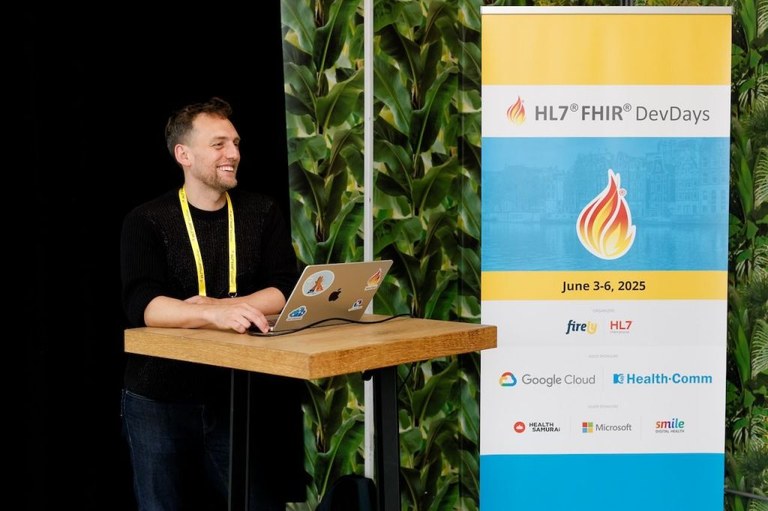DevDays 2025: Implementing FHIR in Low-Resource Settings

Here is Naralabs's Interoperability Consultant Kurt Johnson on his presentation "Remote Oceania: FHIR in Ultra-Low Resource Settings" from DevDays 2025, a conference for the FHIR Community
My hope was to distill six years developing interoperability in multiple Pacific Island Countries and Territories (PICTS) through a range of use-cases including medication request, patient master index, International Patient Summary, Radiology and, of course, integrating Beyond Essential Systems EHR Tamanu with SENAITE LIMS.
The Pacific Use-Case
The demand for interoperability in the Pacific is clear: low-resources means greater need for efficiency and accuracy in a context with above-average incidences of disease, particularly non-communicable. In short - it helps limited resources go further.
Of course there are challenges like diffuse populations, low digital infrastructure and a need for offline-first architecture. These are complex issues but they can underwrite opportunities like greenfields environments with far less red tape.
FHIR + PICT = Perfect Match
Yet, despite FHIR being implemented more in the Global North, Pacific Island Countries are places very much aligned with the original vision for FHIR: to use web technologies to develop an open standard built on the clinical wisdom fed back by a vibrant worldwide community.
Each of these strands of FHIR's DNA is of distinct benefit in the Pacific:
-
Web technologies means that tech skills will be transferred to local engineers with benefits flowing beyond digital health.
-
An Open standard avoids losing precious resources to fees.
-
Most important is Community. FHIR is built on real-world clinical feedback from implementers. This means the Pacific can leverage this reservoir of clinical wisdom to ensure integrations are fit for purpose not just now but likely to handle upcoming features in the future.
The barrier to FHIR adoption was justifying the (non-insignificant) initial investment needed for any standard. Why not just code up up a bespoke integration and call it a day? A proof of concept like a Patient Master Index (PMI) to exchange patient demographics clearly demonstrates the benefit of working standard. A PMI is used by almost every integration as the entire ecosystem needs to know about patients and it is a use-case that does not require difficult domain specific knowledge. Code once and it becomes available to all.
Sustainability First
This proof-of-concept approach meant that FHIR advocacy was a bottom-up affair - one integration at a time strengthened the case, helped by a "sustainability" argument. Sustainability, while certainly misused and overused, means, in an international aid context, that a project needs enough on-the-ground support to continue indefinitely. If a standard is open, requires only limited specialist technical skills, is well documented and has a community in support then it is more sustainable. Like FHIR.
International Patient Summary: Regional Solution
I also considered the possibility of a regional solution for the Pacific, an area of the world that is often overlooked but can punch above its weight when it joins forces. The IPS plays a special role in enabling interoperable collectivity but that's grist for another post.
Finally...
This presentation comes at a time when Naralabs is offering a range of interoperability services that will enable integration with SENAITE not just with FHIR but HL7 too. These services include initial consultation, solution design, interoperability strategising and encoding consultation. Please ask if you have any questions: kurt@naralabs.com.